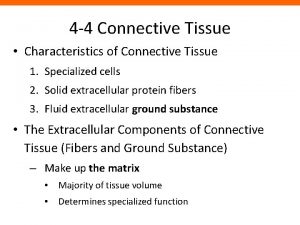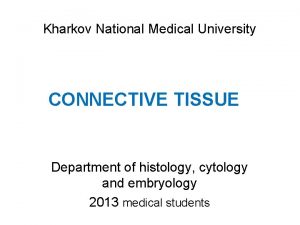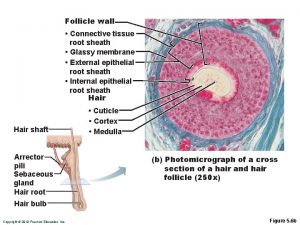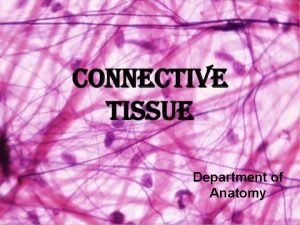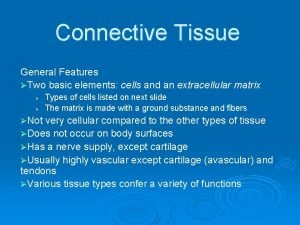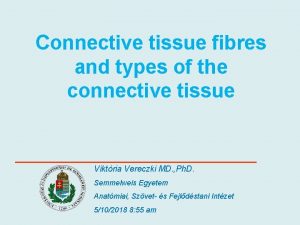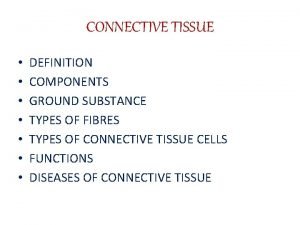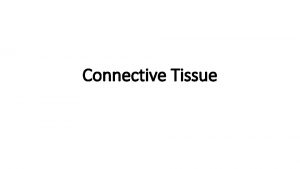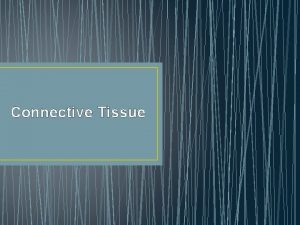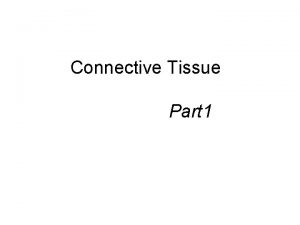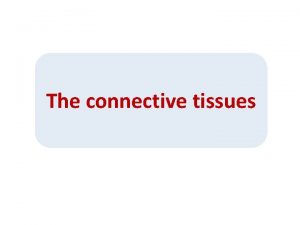Common Characteristics of Connective Tissue Most common Well











- Slides: 11

Common Characteristics of Connective Tissue �Most common �Well supplied with blood. (tendons and ligaments) �Made up of many types of cells and extracellular matrix

Extracellular matrix �Produced by the connective tissue cells then secreted to the exterior �Can be liquid, gel-like, or solid �Examples: Fat tissue: mostly cells and a soft matrix Bone: few cells and very hard matrix

Types of connective tissue � 5 different types: Bone Cartilage Dense connective tissue Loose connective tissue Blood

1. Bone �Bone cells (osteocytes) sitting in cavities surrounded by a very hard ECM �Protect and support other body organs

2. Cartilage �Softer and more flexible than bone �cells with a rubbery ECM �Functions to absorb impact to the bone or form structures where elasticity is desired Ex: the ear and between vertebrae, ribs

3. Dense Connective Tissue �Contains fibroblast cells with tough fibers as the ECM �Forms strong ropelike structures �Tendons, ligaments, dermis

Tendons and Ligaments �Tendons: attach skeletal muscles to bones Less stretchy and contain less elastic fibers �Ligaments: connect bones to bones at joints More stretchy and contains more elastic fibers

4. Loose Connective Tissue �Softer and have more cells and fewer fibers in ECM � 2 main types: Areolar Adipose

Areolar Tissue �Most widely distributed connective tissue �Has several important functions 1. Universal packing tissue because it wraps around organs as protection 2. Hold organs in their proper positions

Adipose Tissue �AKA fat �Forms beneath the skin �Protects the body from temperatures and provides some protection to organs

5. Blood �Considered connective tissue because it is composed of blood cells surrounded by a fluid ECM called blood plasma �Transport nutrients, wastes, and respiratory gases.
 Characteristic of connective tissues?
Characteristic of connective tissues? Connective tissue defintion
Connective tissue defintion Specialised connective tissues
Specialised connective tissues Description of nerve tissue
Description of nerve tissue Embryonic connective tissue
Embryonic connective tissue Reticular tissue labeled
Reticular tissue labeled Hair matrix
Hair matrix Connective tissue
Connective tissue Identify the tissue.
Identify the tissue. The dominant fiber type in dense connective tissue is
The dominant fiber type in dense connective tissue is Elastic fibers vs collagen
Elastic fibers vs collagen Connective tissue components
Connective tissue components
